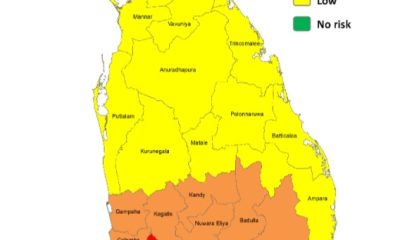Business
CSE’s newest digital push expected to make it worth US$ 60 billion in 5 years
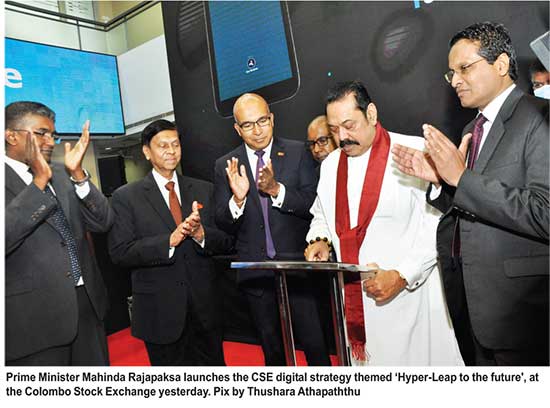
by Sanath Nanayakkare
The Colombo Stock Exchange (CSE) with its newest digitalization drive should do well enough in the next 5 years to accumulate a market capitalization of US $ 60 billion, Ajith Nivard Cabraal, State Minister of Money and Capital Market and State Enterprise Reforms said yesterday.
“Then the Colombo Stock Exchange will have a capacity which can provide funding not only to the government sector but also to the private sector making sure that the President’s goals of prosperity will be achieved,” he said.
Minister Cabraal made these remarks on the trading floor of the Colombo Stock Exchange (CSE) yesterday at a special market opening ceremony where Prime Minister Mahinda Rajapaksa launched a new digital platform for CSE, enhancing the investment experience for investors, stockbrokers, listed companies and other stakeholders.
The digital strategy themed ‘Hyper-Leap to the future’ is formed to digitalise all stakeholder touchpoints enabling end to end connectivity electronically. It will position Sri Lanka to become a global financial hub redefining the stock market landscape.
Elaborating on his point the state minister said,” As a person who on been involved in the stock exchange and securities matters for a long time in various capacities, I know how difficult it is to get a project of this nature going. I know you have put in a lot of work. Way back in 1993 at the time I was the president of the Institute of Chartered Accountants, we organized the mCentral Depository System (CDS) for the first time. I think that was a revolution – a special one- because all the brokers who were struggling with share certificates and documentation were suddenly relieved of all these duties and they could go out and sell, go out and make the market a lot more vibrant. I see an opportunity like that once again,
“The digitalization will take away from brokers as well as market players a lot of paperwork and mundane tasks that have been so far done by you personally. When you are relieved of these duties I am sure you will find enough time to make the market work more efficiently and productively. You need to have buyers whose numbers are increasing and you need to have sellers who will be providing the supply of shares in this business. This means you need to focus on these vital areas and aspects in the market.
“You have got to make sure that the number of shares you have is expanded regularly. I have been around long enough to know that the number of companies that have been trading on the stock exchange has remained almost stagnant for so many years. Every time when someone asks how many companies are there on the stock exchange, we say 200 something. I think this ‘200 something’ has been the number for the last 30 years. So, 5 years from now, we’d like to see this number being spoken of as ‘500 something’. I think you all can do that. As CSE chairman already mentioned there is an effort to make these numbers grow. There is ample opportunity. If all of you take the pains to do that, you can make it happen.
“In 2014, when President Mahinda Rajapaksa relinquished office at the end of 2014 – the market capitalization of CSE was 25 billion dollars. By the end of 2019, it came down to just half of that. – only 12 ½ billion dollars, marking a massive drop. We need to grow this market again. We need to make sure that your efforts are directed towards making the market to expand. The Director General of SEC said, you want the government to come here and use this as a repository of funds. With a 12 ½ billion dollar market cap, I don’t think you can do that. So set your sights high. Set your sights at US $ 60 billion dollars, if I may suggest, for the next 5 years. Then you will have a capacity which can provide funding not only to the government sector but to the private sector making sure that the President’s goals of prosperity will be achieved.
“My Friends, we have our work cut out. The President and the Prime Minister have given you the indication that support will be extended to the stock exchange. I have been appointed as state minister in order to make us responsible for that task. So, I personally will be supporting you. I would like to see you take the direction to move forward. Now you have digitalization in place. I think you need to build on that foundation. There will be plenty to do to achieve our goal. You have got to make sure that you bring in capital that will support the market. This is not going to be easy. I remember from 2007 onwards we were going abroad, we were making sure that capital was adequate in this country.- When we could not raise it globally, we raised it from foreign sources. So, you need to do that. You need to provide capital to companies and you need to provide capital so that new instruments could also be put in place in this country. It would be of total relevance to see an SME Board, a Startup Board, an IT Board and maybe a mechanism to list the BOI companies also on the stock exchange. This means there ‘s plenty of space. Now that you have had the first hurdle cleared, the next is also going to be exciting and we’d like to see you take it up from here. Together we can usher in an era of prosperity in our country with the participation of a truly representative investor community,” he said.
SEC chairman President’s Counsel Viraj Dayaratne, SEC Director General Chinthaka Mendis, CSE chairman Dumith Fernando, and CSE CEO Rajeeva Bandaranaike also spoke at the event.
Business
The government is taking steps to streamline trade facilitation, customs processes, investment approvals, and improving export facilities – Prime Minister
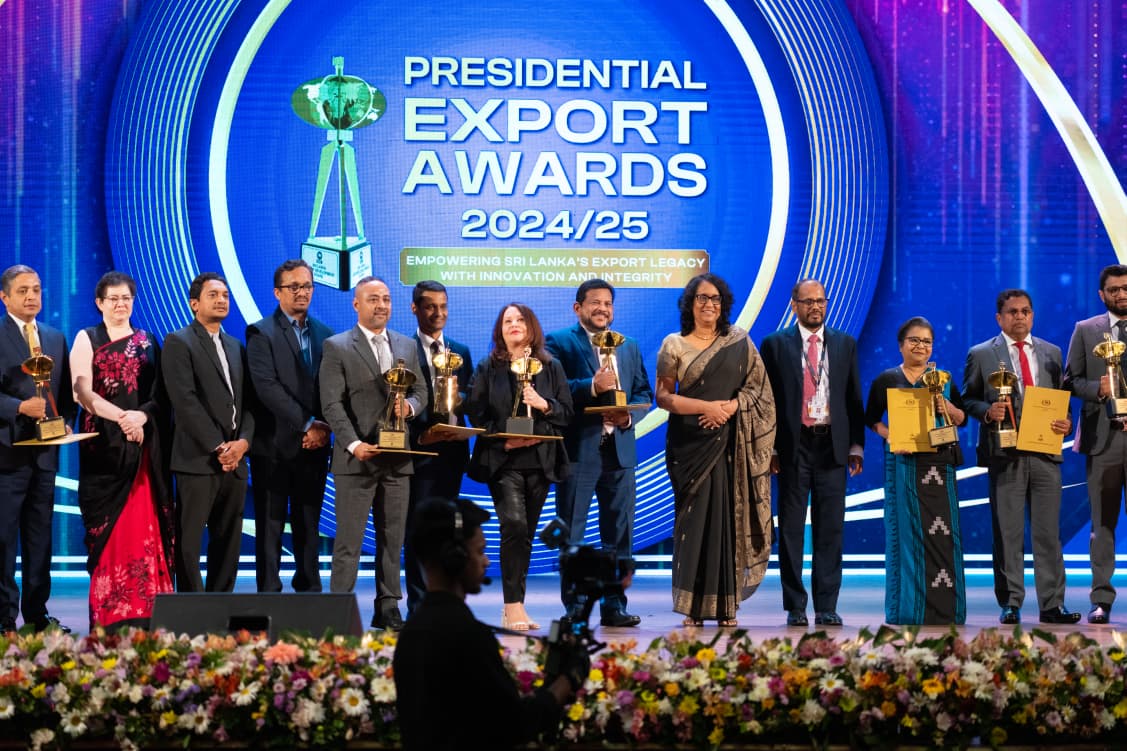
Prime Minister Dr. Harini Amarasuriya stated that the government is taking steps to strengthen local exporters by making trade facilitation, customs procedures, and investment approvals more efficient, and by improving export services.
The Prime Minister made these remarks while addressing the 27th Presidential Export Awards 2024/25 ceremony organized by the Ministry of Industries and Industrial Development together with the Export Development Board.
At this ceremony, which was held to recognize the best exporters of Sri Lanka for the financial year 2024/2025, a total of 107 awards including 15 overall awards and 92 sectoral awards for products and services were presented. Merit awards were also presented to eligible sectors based on applicants’ performance and their contribution to national economic development. Awardees were selected on several criteria such as export market diversification, job creation, growth in export revenue, repatriation of export income, environmental sustainability, institutional social responsibility, and value addition.
Institutions that demonstrated outstanding performance in the export sector were presented with the prestigious Presidential Export Awards for the year under the patronage of Prime Minister Dr. Harini Amarasuriya and Minister of Industries and Industrial Development, Mr. Sunil Hadunnetti.
Further expressing her views, the Prime Minister stated:
“The Presidential Awards Ceremony for exporters reminds us that Sri Lanka’s progress depends not merely on policies or administration, but on the ability to produce, to create value, and to compete internationally.
Over the past year, we faced numerous challenges. As a result, global markets and supply chains were disrupted. Economic uncertainty prevailed. We faced natural disasters. Despite this, many exporters had to adjust to these changes, reorganize production processes, diversify customers, and adopt digital technologies in order to remain competitive in the market.
The impact of the Ditwah cyclone also affected several industries within the export sector. Production facilities, storage facilities, and transportation routes in affected areas were damaged. Production chains and delivery schedules were disrupted.
Under such a difficult situation, some exporters experienced significant setbacks while trying to meet international export demands.
The government is taking steps to support exporters by assessing the damages they suffered due to the emergency situation, restoring their operations, and helping them recover. The government is also working to strengthen resilience against future natural disasters and to rebuild affected areas in a way that minimizes the risk of similar situations arising again.
Sri Lanka is currently undergoing a new economic transformation. For many years, instability, policy inconsistencies, and administrative inefficiencies hindered the progress of the country. This weakened investor confidence and made it difficult for businesses to plan ahead.
However, the present government is committed to governance based on stability, transparency, and accountability. This is not a short-term approach. It is a long-term process to ensure that the country does not fall back into uncertainty.
For this purpose, the government is implementing strong fiscal management, predictable policies, clear and simplified regulations, anti-corruption measures, major institutional reforms, measures that allow businesses to plan ahead, instill investor confidence, minimize unnecessary barriers, and support the development of the private sector.
For a long time, we relied heavily on international loans to sustain national expenditures. However, this is not leading a path toward a stable future. Our progress depends on our ability to earn through trade, innovation, and global engagement.
Your ability to take Sri Lankan expertise and creativity to the world is a strength for the entire nation. The government is ready to extend the necessary support to achieve this.
We understand that issues such as policy inconsistencies, delays that increase operational costs, limited access to competitive financing, gaps in infrastructure and technology, weaknesses in trade facilitation, and slow progress in expanding market access have impacted you. I would like to assure you that the government is directly addressing these challenges.
The focus of the government has drawn to build efficient, transparent, and predictable systems, streamlining trade facilitation, customs processes, and investment approvals, improving export facilities, and minimizing the gap between local businesses and global markets.”
This event was attended by Ministers Kumara Jayakody, Ramalingam Chandrasekaran, Sunil Kumara Gamage; Deputy Ministers Chathuranga Abesingha, Eranga Weerarathna, Arun Hemachandra, Nishantha Jayaweera, Muditha Hansaka Wijayamuni; Governor of the Central Bank Nandalal Weerasinghe; Secretary to the Ministry of Industries and Industrial Development Tilaka Jayasundara; Chairman of the Export Development Board Mangala Wijesinghe, along with ambassadors, foreign delegates, exporters, and a large gathering.
[Prime Minister’s Media Division]
Business
India unveils future of South Asia’s construction industry

South Asia’s largest construction equipment exhibition began December 9 in Bangalore, India showcasing a broad range of next-generation machinery and technologies. Equipment and tools demonstrated improved productivity, advanced controls, energy-efficiency, telematics integration, IoT-enabled monitoring and predictive maintenance. These innovations support better project outcomes across roads, highways, rail, and metro. Sea ports. Airports, mining and development.
The event stands as a platform for collaboration, knowledge exchange and business engagement. It brings together stakeholders who are shaping India’s transition towards infrastructure that is smarter, greener and aligned with global standards.
“India continues to strengthen its position as one of the world’s most dynamic growth engines supported by decisive policy direction and a renewed national focus on infrastructure” said Rajiv Memani President Confederation of Indian Industry (CII) at the inauguration of EXCON 13th edition held at Bangalore International Exhibition Centre, Bengaluru. Memani further stated that as investment expands across transportation, logistics, urban development and manufacturing, EXCON 2025 becomes a vital platform to showcase how industry and innovation are shaping this momentum.
Speaking at the inauguration R Mukundan President designate CII and Chairman EXCON 2025 noted that ‘’India is on a historic growth trajectory aiming to become a $30 trillion economy by 2047 under the Viksit Bharat vision and Infrastructure will be the backbone of this transformation with INR 11.21 lakh crore allocated for Financial Year 2025/26. Projects such as Bharatmala, high-speed rail and Smart Cities under PM Gati Shakti are driving connectivity and urban development.” He said Excon supports this by bringing innovators, policymakers and industry leaders together to introduce automation, IoT, AI-driven machinery and green technologies to improve execution and competitiveness. He added, “Every edition sets benchmarks and will continue to empower stakeholders and drive modernisation.”
“EXCON 2025 stands as a testament to India’s growing engineering excellence and global aspirations. As we embrace new technologies and sustainable practices, the Indian construction industry is poised shape the infrastructure landscape of tomorrow” said Deepak Shetty, President ICEMA and CEO/MD JCB India Ltd.
“The exhibition brings together Industry leaders, policy makers and innovators of South Asia to highlight the crucial role of advanced technologies, manufacturing strength and green practices in shaping the national growth as we move in to a new era of infrastructure” said Chandrajith Banerjee, Director General, CII.
Over one million business visitors are expected during this period. Over 1250 exhibitors display a wide range of construction equipment from across the world with 7 country pavilions from China, France, Germany, Italy, South Korea, Turkey and the United Kingdome. They showcase a wide spectrum of global construction technologies and equipment solutions. The presence of these pavilions reinforces EXCON’s role as a bridge between global innovation and South India infrastructure goals.
OTR Lanka and Laugfs Corporation (Rubber) Ltd took part as trade partners from Sri Lanka.
Event was sponsored by well reputed brands such as; AJAX, BKT, CATERPILLAR, conmar, JCB, KOBELCO, KOMATSU, MRCRUSHING IT, PUZZOLONA, RMX, SANY, SCHWING Stetter, TATA HITACHI, VENUS, ACE, Apollo, ARX, Bobcat, EMERALD, HAIL STONE. HYUNDAI, MAHAVEER DISTRIBUTORS, Parker, VELVEX, walavoil, wipro and WIRTGEN GROUP.
by Claude Gunasekera
Business
CHEC South Asia & Southeast Asia completes emergency clearing of A5 Highway
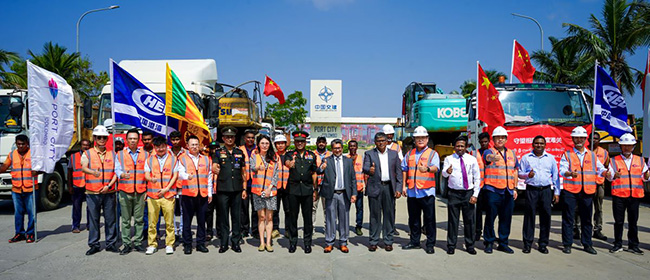
China Harbour Engineering Company Ltd South Asia & Southeast Asia, working in close coordination with the Sri Lanka Army, the Road Development Authority (RDA), local authorities and surrounding communities, has recently completed the emergency clearing of the A5 highway, restoring a vital transportation link that had been severely obstructed by landslides and debris in the aftermath of Cyclone ‘Ditwah’. The work was carried out from 04th December to 10th December over a continuous seven-day period.
The A5 highway, a key route for community connectivity, emergency service access and the transport of essential supplies, became impassable after the cyclone triggered extensive damage across multiple regions. Responding to urgent requests from relevant authorities, China Harbour South Asia & Southeast Asia mobilised its specialised rescue teams, heavy machinery and technical expertise to accelerate the clearance process and support national recovery operations. China Harbour has been working in Sri Lanka since 1998, marking 27 years of partnership with the country. The company noted that it has also actively participated in rescue and relief efforts during major national disasters such as tsunamis, bomb attacks and the COVID-19 pandemic, underscoring its longstanding commitment to Sri Lanka during moments of crisis.
A coordinated ground operation involving rescue personnel, 24 land-clearing machines and 36 trained workers was deployed to the affected areas. Working through unstable terrain and challenging weather conditions, the team removed large volumes of earth, fallen trees, rocks and damaged structures, allowing authorities to safely reopen the highway for public use.
The restoration of the A5 highway forms an important component of the company’s broader relief efforts following Cyclone ‘Ditwah’. These efforts included early rescue deployments, the distribution of emergency supplies and coordinated financial support through the Chinese Chamber of Commerce in Sri Lanka (CCCSL), reaffirming China Harbour South Asia & Southeast Asia’s commitment to supporting the country during times of national need.
-

 Features4 days ago
Features4 days agoFinally, Mahinda Yapa sets the record straight
-

 News6 days ago
News6 days agoOver 35,000 drug offenders nabbed in 36 days
-

 News5 days ago
News5 days agoCyclone Ditwah leaves Sri Lanka’s biodiversity in ruins: Top scientist warns of unseen ecological disaster
-
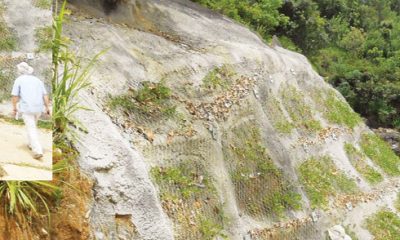
 Features7 days ago
Features7 days agoThe Catastrophic Impact of Tropical Cyclone Ditwah on Sri Lanka:
-

 News6 days ago
News6 days agoRising water level in Malwathu Oya triggers alert in Thanthirimale
-
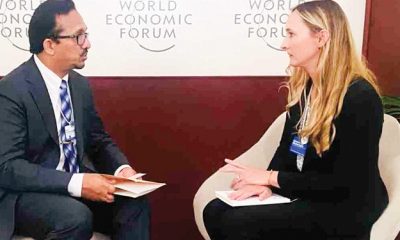
 Features4 days ago
Features4 days agoHandunnetti and Colonial Shackles of English in Sri Lanka
-

 Business2 days ago
Business2 days agoCabinet approves establishment of two 50 MW wind power stations in Mullikulum, Mannar region
-

 Business6 days ago
Business6 days agoSri Lanka betting its tourism future on cold, hard numbers








